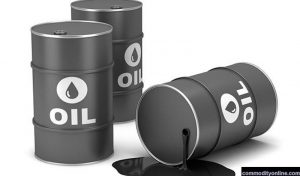Crude oil price yesterday continued its upswing as Brent, Nigeria’s benchmark crude, rose above $113 per barrel for the first time in close to eight years. This was as the Organisation of Petroleum Exporting Countries (OPEC) resolved to continue the addition of a measured volume of 400,000 barrels per day, agreed with its allies, OPEC+, in August last year.
The producers’ group, which decided on the quota for member-countries for April, allocated Nigeria 1.735 million barrels per day as its production for next month. But it remains doubtful whether Nigeria would be able to meet its allocation for the month, having consistently, for close to a year, been unable to supply the global market with its required volume.
Last month alone, the country recorded a deficit of over 300,000 barrels per day, even though the total quantity of oil it drilled for that month, roughly 1.4 million bpd, was its best in several months.
The increasing crude oil price also implies that the controversial subsidy payments in the country would rise when the computation for this month is done, since the pump price of petrol in Nigeria, which does not refine a drop of the product, has a positive relationship with the international crude oil prices.
Although by now, Nigeria should be saving as much as $50 per barrel that it sells, the reverse appears to be the case, as the cost of under-recovery continues to soar.
In January 2022 alone, the Nigerian National Petroleum Company (NNPC) Limited claimed that it expended N210.38 billion on petrol subsidy.
Furthermore, due to the challenge, last month, the oil company failed to remit any money to the federation account, a development that would definitely hamper the ability of sub-nationals to meet their financial obligations.
President Muhammadu Buhari recently asked the National Assembly to approve the N2.557 trillion budget for petrol subsidy in 2022.
However, aside Brent, which exceeded $113 per barrel, recording over 7.69 per cent hike at the time of writing this report, West Texas Intermediate (WTI), the United States benchmark, also surged to $111.24 per barrel, with about 7.57 per cent increase.
It came as Russia’s flagship crude oil, which was offered for sale at a record discount, got no bidders, the latest indication that trading of oil from the country’s western ports is grinding to a halt.
But despite the tightening global oil market, OPEC yesterday resisted pressure from the United States and some of its allies to increase supply, although prices were already under pressure before the Russia invasion of Ukraine last week.
Though the United States and other member states of the International Energy Agency (IEA), in a bid to cool prices, announced a strategic oil reserve release, so far it has done little to tame rampaging oil market prices.
Despite calls to ramp up production, OPEC alliance kept additional output at 400,000 barrels per day.
However, it did not come as a surprise to those who followed activities of the oil cartel closely, since the producer group had insisted that supply was not the problem. OPEC alone accounts for around 40 per cent of the world’s oil supply.
A release after the 26th OPEC and non-OPEC ministerial meeting, concluded yesterday, explained that the market remained balanced and did not need further distortions. It noted that following the conclusion of the 26th OPEC and non-OPEC ministerial meeting, the current oil market fundamentals and the consensus on its outlook “pointed to a well-balanced market”.
OPEC stressed: “The current volatility is not caused by changes in market fundamentals, but by current geopolitical developments.”
It added, “The OPEC and participating non-OPEC oil-producing countries decided to: reaffirm the decision of the 10th ministerial meeting on 12 April 2020 and further endorsed in subsequent meetings, including the 19th ministerial meeting on 18 July 2021.
“It reconfirms the production adjustment plan and the monthly production adjustment mechanism approved at the 19th ministerial meeting and the decision to adjust upward the monthly overall production by 0.4 mb/d for the month of April 2022.
“OPEC reiterates the critical importance of adhering to full conformity and to the compensation mechanism taking advantage of the extension of the compensation period until the end of June 2022.”
OPEC stated that compensation plans should be submitted in accordance with the earlier agreed procedure, and it scheduled its next meeting for March 31.


